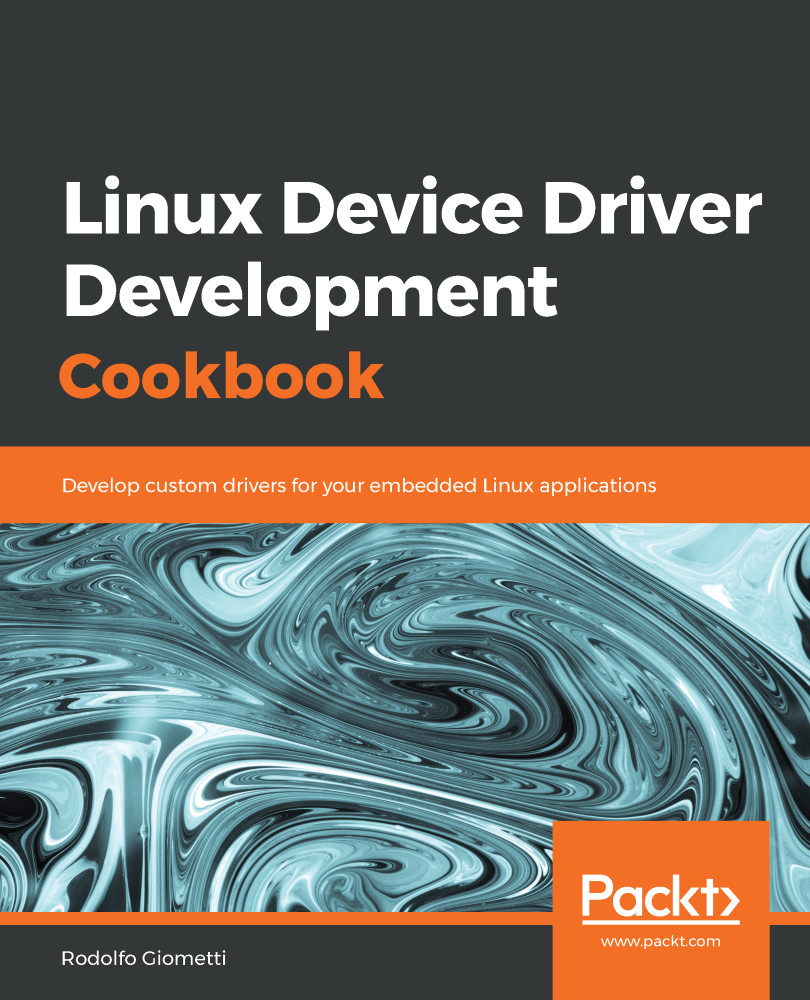In the Linux kernel, three major device types exist—char device, block device, and net device. And of course, we have three major device driver types; that is, char, block, and net drivers. In this chapter, we're taking a look at a char (or character) device, which is a kind of peripheral that can be accessed as a stream of bytes, such as a serial port, audio device, and so on. However, in this recipe, we're going to present a really basic char driver, which simply registers itself and does nothing more than this. Even if it may seem useless, we will discover that this step really introduces plenty of new concepts!
Actually, it could be possible to exchange data between peripherals and user space without a char, block, or net driver but by simply using some mechanism offered by the sysfs, but this is a special case and it is...




































































